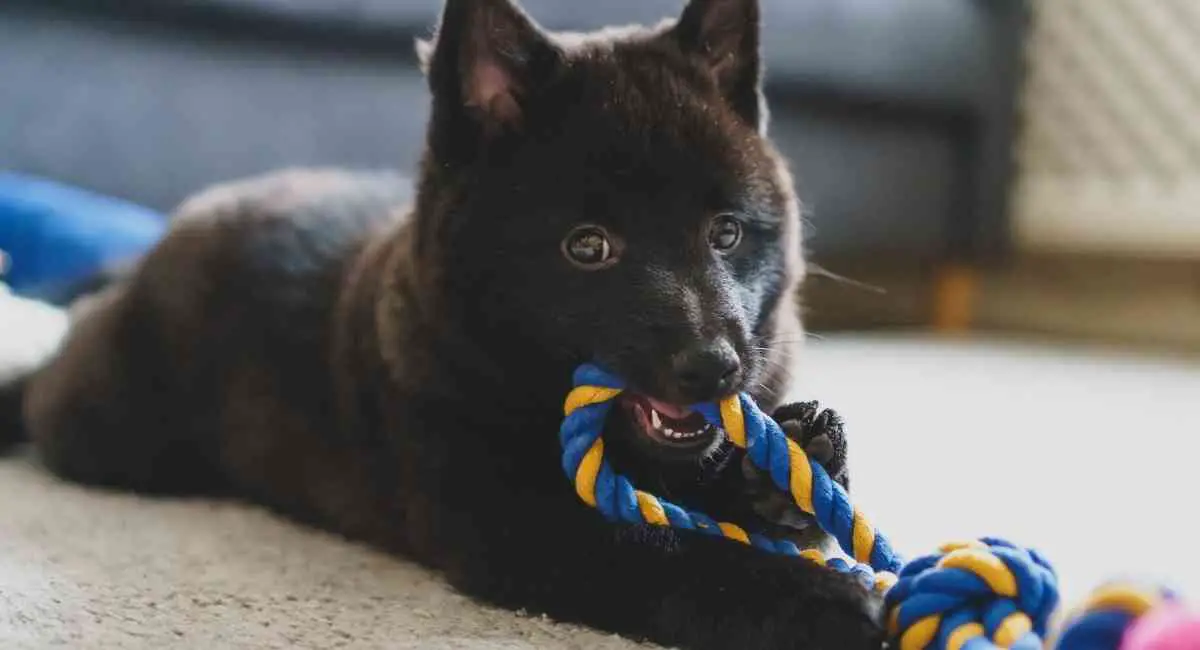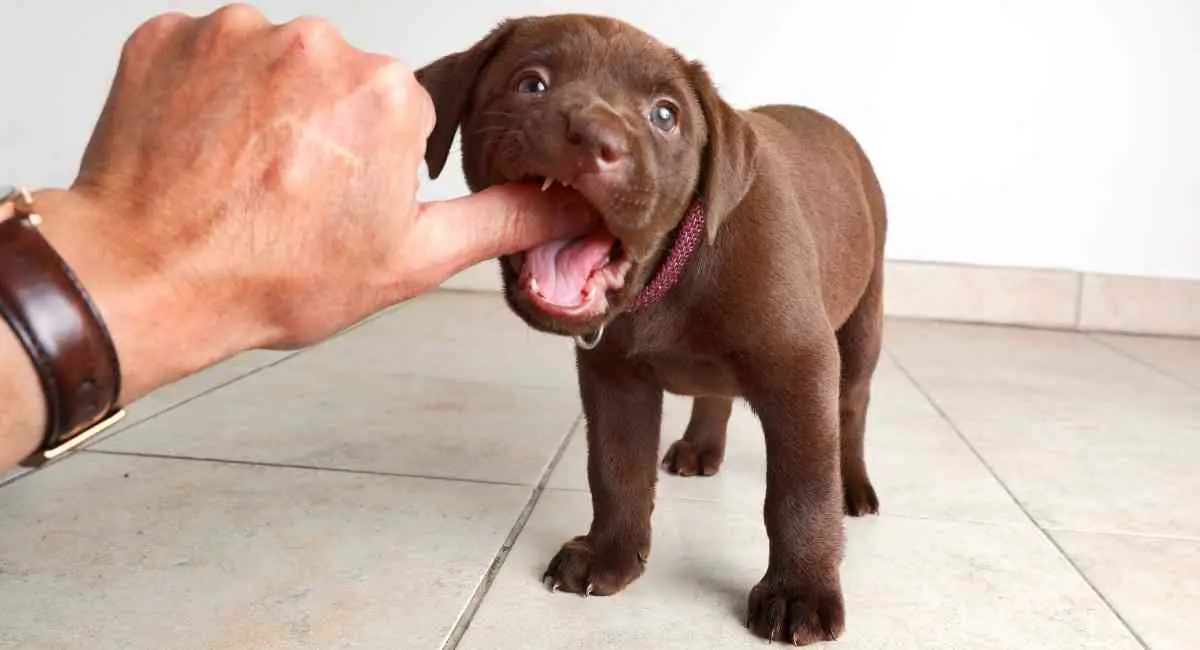Have you begun to notice that your puppy has started nipping at your hands and ankles or chewing on things they shouldn’t more than usual? When you cuddle up to them, do you find them drooling more? Well, these are two signs that your little cuddle bug has started the teething process.
That’s right, just like babies, your furry bundle is going through the teething process. Unlike human babies, a puppy starts to lose theirs a lot earlier on. In most cases, when your puppy has reached six months old, they have adult teeth.
To help you deal with this situation, read our guide on puppy losing teeth.

Signs Your Puppy is Going Through Teething Process
It can sometimes be challenging to determine if your puppy is starting to lose their milk teeth and start getting their permanent ones. Certain behaviors will begin to show that your puppy’s baby teeth are starting to fall out and the teething process is beginning.
Several signs indicate that your pup is losing its puppy teeth.
- They are drooling a lot more. This is because their gums are being affected by this process and are getting sore.
- Your puppy is nipping, biting, gnawing, or mouthing on your hands more often.
- They like to chew on things more frequently during the teething period. This excessive chewing behavior not only helps to alleviate the pain they feel but gives them the chance to try out their new adult teeth.
- Have they begun to whine more? If they have, again, this is a clear indication of the painful process of their milk teeth being replaced with their permanent ones.
- When they are chewing on a toy, you notice a bit of blood. Don’t be concerned at all about these spots of blood – it is perfectly normal. Like the other things mentioned above, this is a normal part of the process where a dog’s baby dog teeth get replaced by their adult dog teeth.
If you know what the signs are when it comes to your loyal friend’s permanent teeth coming through, you’ll be better prepared to help them deal with it.
What are the Different Teething Phases
It is important to note that it does vary when the teething process begins for puppies. Generally, though, you will find that the loss of puppy teeth does naturally follow the same teething process.
Each teething phase looks something like this:
Newborn Puppies
When born, a puppy doesn’t have any teeth at all. In the following weeks, their first baby tooth starts to appear.
At Age of 2-3 Weeks
This is when the first of their teeth start to come through their gums. Most likely, you’ll see their incisors first, followed by their canine teeth. Then, finally, their molars appear.
At 6 Weeks of Age
By now, your pup should have all of its teeth at this baby teething phase. This is when they should be weaned off their mother’s milk and eat solid food. It isn’t long after this that the loss of teeth occurs.
At 12-16 Weeks of Age
It is not long after this that their deciduous teeth are replaced. Occasionally you may come across a pup’s baby tooth on the floor, but not very often. They often swallow the baby tooth as they eat or chew on a toy.
Between 5-6 Months of Age
By this stage, all of your puppy’s baby teeth will have fallen out and will have been replaced with their permanent sets of teeth.

What to Give to Relieve Discomfort of Puppy Teething
When our puppy is teething, you should offer them chew toys that will not chip or splinter as they chew on them. The Kong is an excellent toy to choose from, as it is made from rubber and is durable enough to withstand the pup’s vigorous chewing.
You may also want to consider getting them a nylabone or a toy made from rope. If you give them a rope toy, pay close attention to ensure they aren’t shredding it. If they are, they may end up swallowing bits that could prove detrimental to their health.
A great thing to help alleviate your puppy’s discomfort as their new sharp teeth start to grow is to fill the Kong toy full of tasty treats and then freeze it. The coolness of the Kong will help to soothe their gums.
You will also want to make sure to keep an eye on your puppy when you give them anything to chew on to help alleviate the discomfort. If you begin to notice that there are quite a few spots of blood on the toy when they are enjoying a very enthusiastic chewing period, then seek expert advice. It could help to reduce the risk of them developing advanced gum disease.
Finally, always make sure that you keep a close eye on them when you give them anything to chew on to help during the teething process. Sometimes if they chew on anything a little too much, they could hurt themselves.
The Takeaway
We all want to enjoy every moment we have as our puppy begins to grow up. Losing teeth is just part of this when they go from puppy to adult dogs.
As soon as their baby molars start to appear, you must put in an excellent dental care regime for them. You should be paying close attention to your dog’s gums and teeth, even after they have finished teething.
This is crucial as an excellent dental care regime will prove beneficial to your pet’s overall wellbeing. Along with feeding them the right kinds of crunchy foods, get them used to you cleaning their teeth with a doggy toothpaste.
We hope you have found the information provided above about your puppy losing teeth helpful. Why not tell us how you have dealt with this stage of your puppy’s life and what you found useful to relieve the discomfort they felt?
